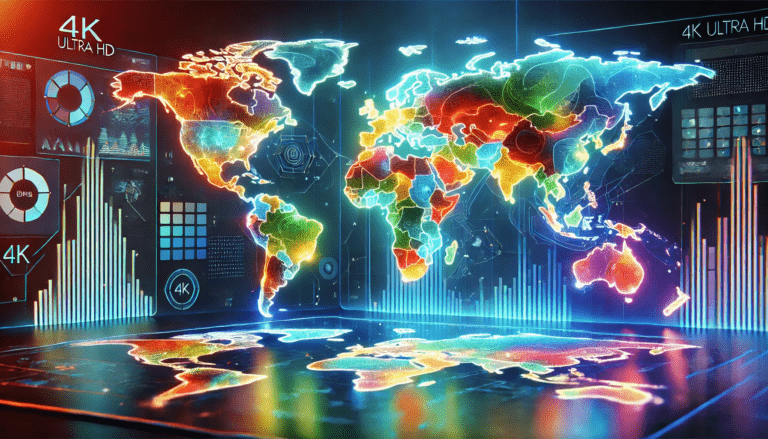
4K world map: Great contrasts in its deployment in Europe, Asia and LATAM
- Spain and France are leading the implementation of Ultra High Definition (UHD) in Europe, deploying terrestrial channels to bring it free to homes, while Germany and Italy have slowed down their deployment, and the United Kingdom has no plans to launch a public DTT channel in UHD
- NHK, Japan’s public broadcaster, has unveiled the 8K x 8K camera, an innovative, cutting-edge device with small size but big potential that extends the reach of UHD production
- Globo, the fourth largest television network in the world, has unveiled the TV Brasil 3.0 project, the new DTT system that was first used for the Paris Olympic Games, broadcasting in 4K HDR with immersive audio and customization options
The tenth edition of the 4K HDR Summit, “Where technology and content have time to talk”, held its third day, in virtual format, on Wednesday, November 13 after the great reception of the two face-to-face sessions that brought together 400 attendees at the Cartuja Auditorium, in the Science and Technology Park of Seville. 66 experts from 19 countries from three different continents (Europe, America and Asia) will discuss during this week the present, the future and the applications of the most advanced technology (UHD/4K, HDR, 8K), coinciding with the 21st edition of the Seville European Film Festival.
The 4K HDR Summit has traveled to different parts of the world (Korea, Japan, Brazil, Mexico, Argentina, Germany, United Kingdom, Italy, France, Spain, among others) to learn first-hand about the commitment to Ultra High Definition (UHD) in some of the most important international public broadcasters.
Spain at the forefront of UHD in Europe
During the two face-to-face sessions, Radio Televisión Española (RTVE) played a leading role and in this first virtual one, its director of audiovisual policies, Ángel García Castillejo, was proud that Spain has become “the first country in the world capable of offering an Ultra High Definition signal in free-to-air DTT and with 99% coverage in regular broadcasts” through its public television. A milestone that has coincided in time with another as the broadcasting of the Paris 2024 Olympic Games in Ultra High Definition (UHD) through La 1 UHD: “We started a new era in digital terrestrial television, in free-to-air television in our country, with broadcasts in Ultra High Definition and 4K quality of a live event,” said Castillejo.

A completely opposite idea to the one they have in the UK, where “at this moment there are no plans to launch a UHD public television channel”. This has been confirmed by Andrew Dunne, expert in television production delivery at the British BBC, who assured that “there will only be UHD as an over-the-top service, an OTT service, over the Internet. At the moment, I don’t expect us to use broadcast channels for UHD. All our DTT channels are HD”.

Something similar happens in Germany, where “public television is usually a few years behind in the adoption of new technologies compared to private broadcasters,” said engineer Stephan Heimbecher, head of production and infrastructure of the ARD competence center, who believes that “the same will happen with UHD and HDR”. “In recent years we have seen some streaming platforms offer UHD and HDR content, and while you can’t say it has failed, it hasn’t become as widespread as you might think,” reckoned Heimbecher, who noted that “at ARD we have carried out isolated UHD and HDR productions at some of the regional broadcasters, a good starting point for resuming efforts towards an overall UHD/HDR strategy.”

Japan and its commitment to 8K
A country that has historically pioneered broadcast technologies is Japan. Kodai Kikuchi, research engineer science and technology at Japan’s NHK, has presented the novel and innovative 8K x 8K camera system with “an 8K square sensor that supports 8K resolution both horizontally and vertically, allowing versatility in various aspect ratio outputs.” A sensor that, as detailed by Kodai Kikuchi, “despite its capabilities, remains highly compact, fully meeting the high demands of broadcast quality requirements.” “We are ready to go beyond traditional UHD frames.“

For his part, KBS production director Seunggun Lee offered his vision of Ultra High Definition (UHD) in South Korea, where “not much content is produced in 4K HDR today, only on an ad hoc basis,” since the cable that reaches Korean homes does not support 4K HDR content. “UHD content is consumed through streaming platforms such as Netflix or Disney,” while “Korean entertainment series use HD HDR.“
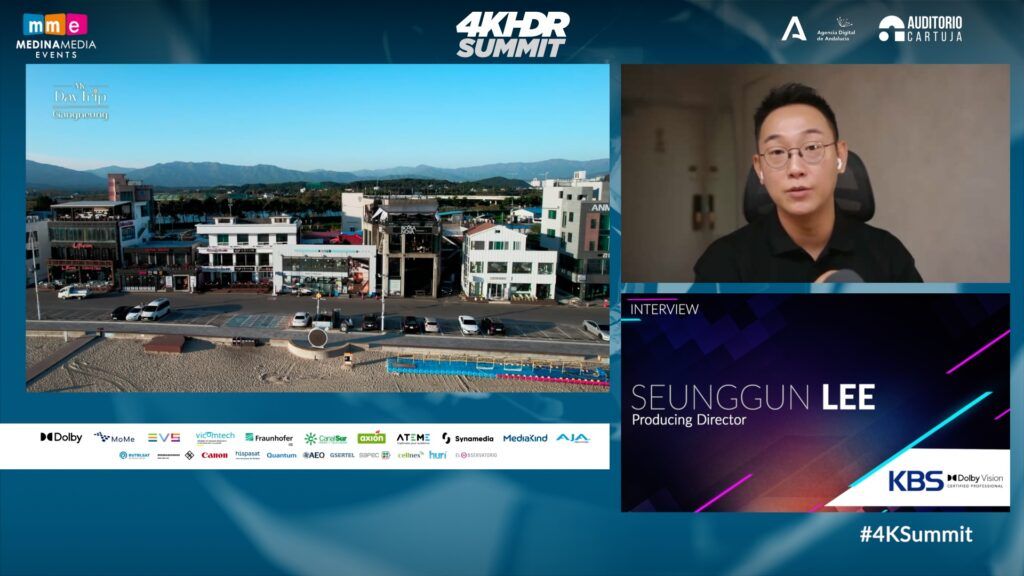
The new TV Brasil 3.0 project
Brazilian Carlos Cosme, technology and innovation specialist at Globo, has presented to the world the TV Brasil 3.0 project, “the new Brazilian DTT system”, which was used for the first time during the celebration of the Paris Olympic Games with “4K HDR transmissions with immersive audio and customization options”. “TV 3.0 is not limited only to 4K and immersive and customizable audio, but also has the possibility of offering content in 8K HDR.”
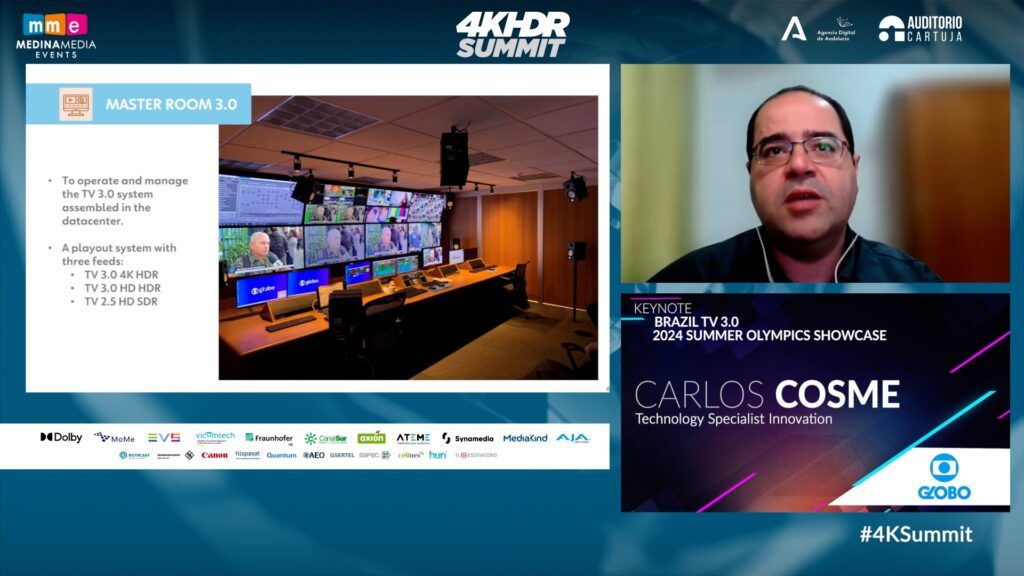
José Francisco Loza Uribe, Operations Manager of Grupo Televisa, has shelled out the current status of Ultra High Definition (UHD) in Mexico, where they are still evolving, but somewhat behind in terms of DTT. “The implementation in DTT does not depend only on us, but when it is authorized, we are ready to implement it immediately,” considered Loza Uribe, who highlighted Televisa Mexico as “spearheading the country” by making productions in 4K with HDR. Televisa Mexico is a pioneer in offering the highest image quality to provide a superior experience to the viewer. In fact, it has its own platform where they offer content, movies and series in 4K while looking towards 8K. “We already have productions in 8K and the equipment ready.”
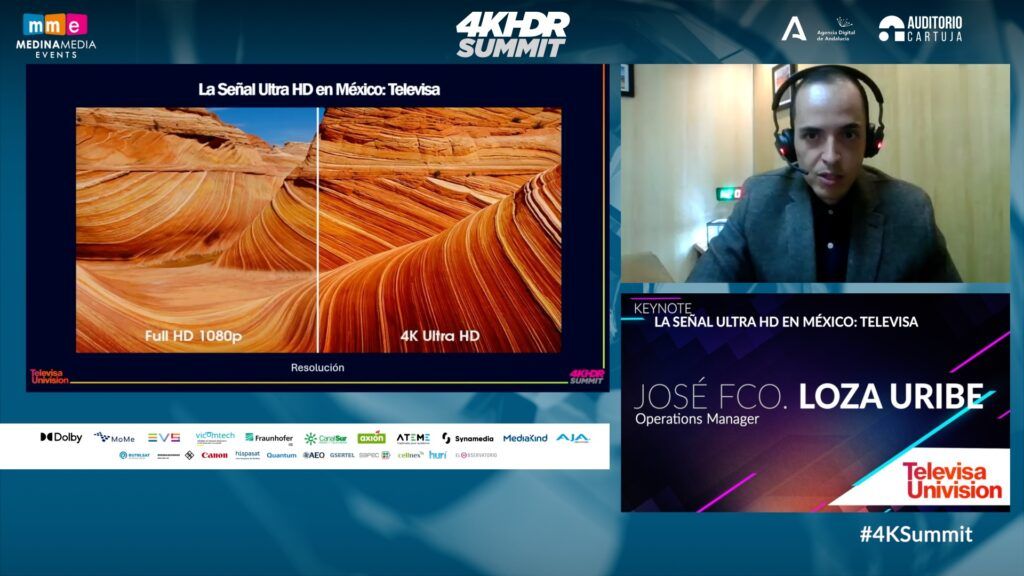
For his part, the Argentine Jorge Notiaranni, independent media and production consultant, has offered a global vision under his extensive experience in the audiovisual sector ensuring that “what really makes the difference in the 4K is basically the HDR, where you have different brightness, contrast and the image is superior”. On the development of Ultra High Definition (UHD) in Latin America, he acknowledged that Brazil is one step ahead in this matter.
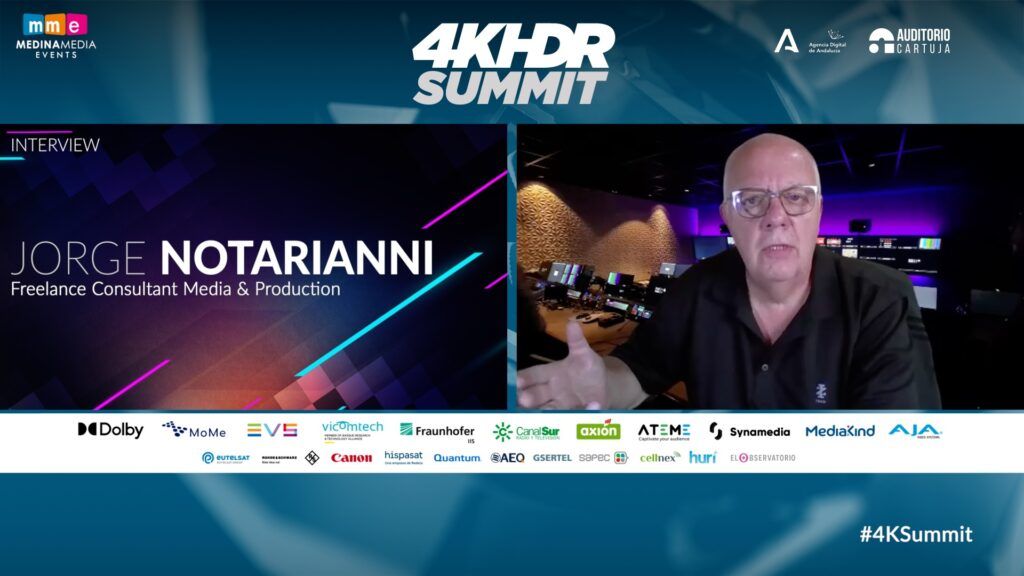
UHD and immersive audio at the Paris Olympics
Dutchman Frans de Jong has represented the European Broadcasting Union (EBU) at this 4K HDR Summit by sharing the most important topics and highlights of this international corporation. “We focused on topics of common interest such as security, C2PA, the introduction of IP-based production (SMPTE 2110), AI and cloud production, as well as HDR,” explained De Jong, for whom “UHD deployment is lower than some people expected and with HDR maybe the same thing will happen.”
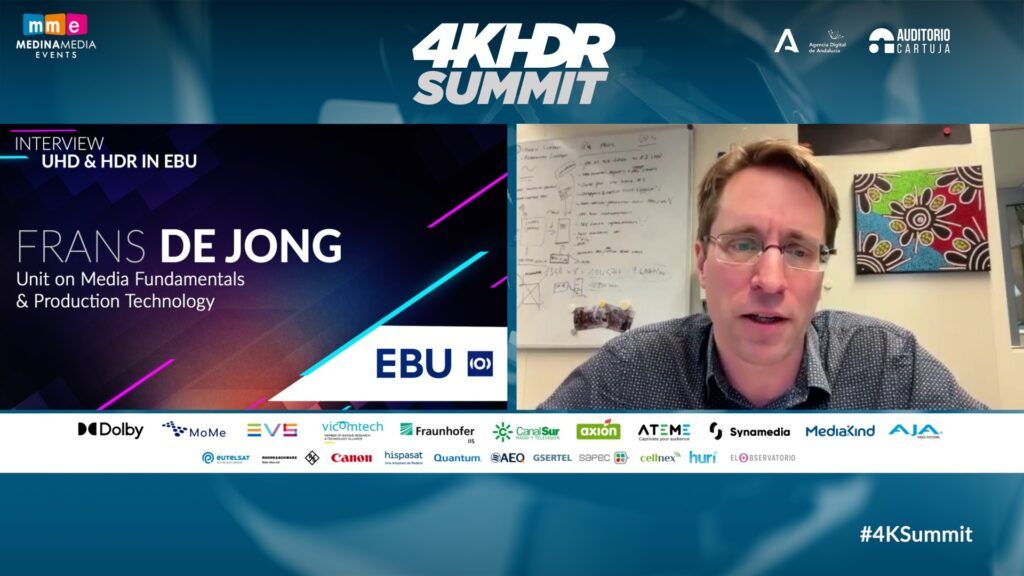
For its part, the Olympic Broadcasting Services (OBS) is another organization that has had several representatives during the face-to-face days of the summit. Now the Portuguese Nuno Duarte, sound designer and audio manager at OBS, has unpacked many technical aspects of all the work that was done in the field of audio during the Olympic Games in Paris 2024 as immersive audio, which “was very important and the results were excellent,” even in the opening ceremony, the great technical challenge to be held outdoors and along a route of 7km. “We had around almost 160 microphones and more than 2,000 DSP channels” along the Seine River, while 75-80% of event spaces “used IP audio, a mature technology much more mature than AI, a technology with potential but with a long way to go.”
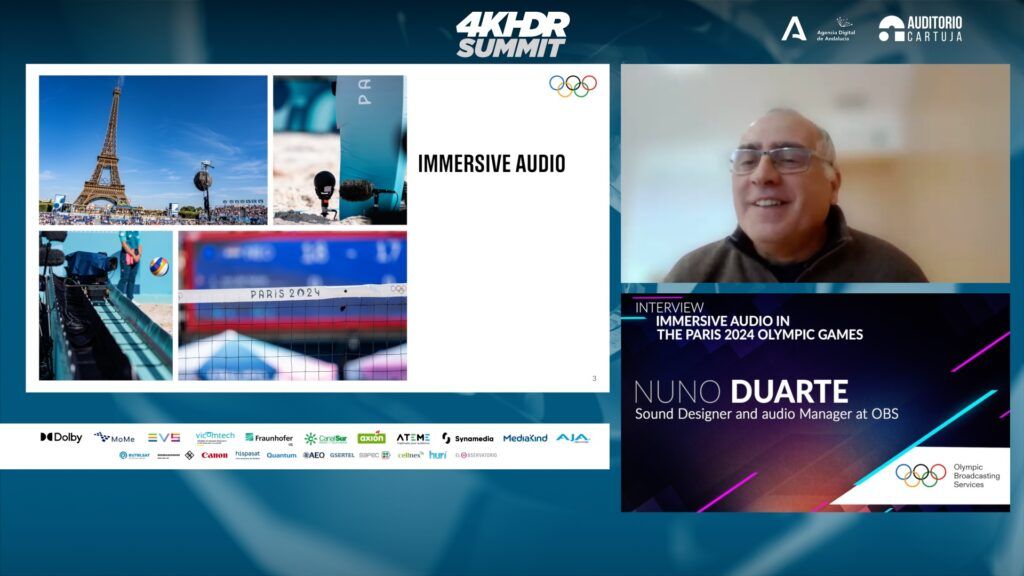
Long road to UHD
The British Ian Nock, chairman of the Interoperability Working Group at the UltraHD Forum and CEO and managing consultant of Fairmile West spoke of interoperability for a connected world as the set of “issues that arise from the interconnection of products from different manufacturers, from technology, content and production to the end of the process”. For many years, “the UltraHD Forum has been working on making things work together to increase effectiveness,” said Ian Nock, who ventures that for the remainder of 2024 and 2025 this international forum will move “beyond the technological aspects” to focus on “the effective delivery of services and the improvement of content creation, production and distribution.“
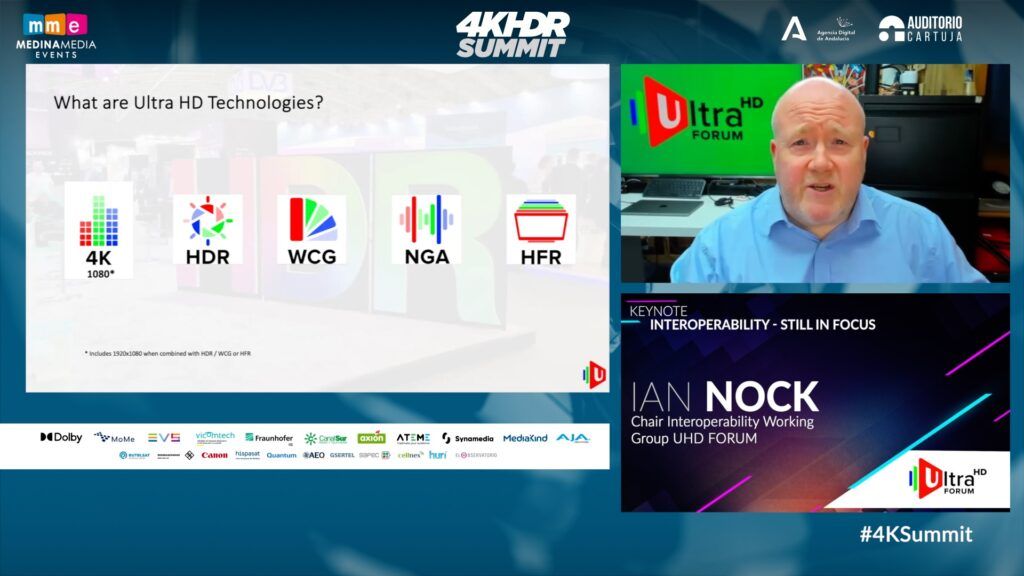
Spaniard Jorge Rodriguez, Hispasat’s head of product and marketing, has offered revealing figures on the number of Ultra High Definition channels worldwide: “There are around 100 Ultra High Definition channels worldwide, a small number compared to SD and HD. We expect that after 2027, the growth of HD will be significant and will overtake SD. By 2033, we expect the number of Ultra HD channels to triple.“
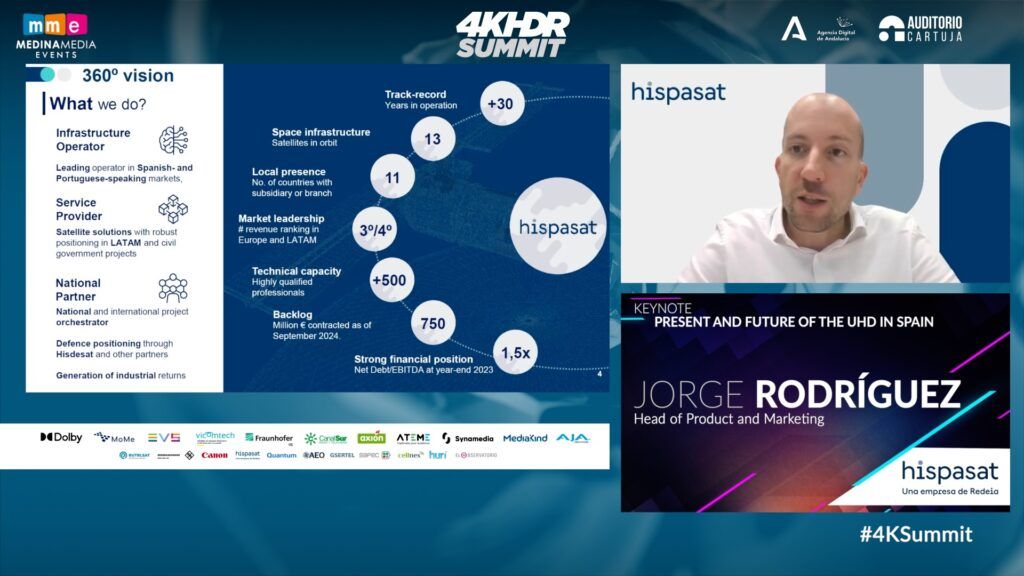
Xavier Redón, also a Spaniard and head of projects at Cellnex, acknowledged that “the broadcasting situation in Spain is the best possible”. Not in vain, in 2025 is expected to join La1 UHD other “two additional UHD channels that will be broadcast simultaneously”, so “there will be, instead of one UHD channel, three UHD channels in regular transmissions”. Specifically, Antena 3 and Telecinco will join the first RTVE channel in this ambitious project promoted by the Government to make a definitive leap towards Ultra High Definition (UHD).
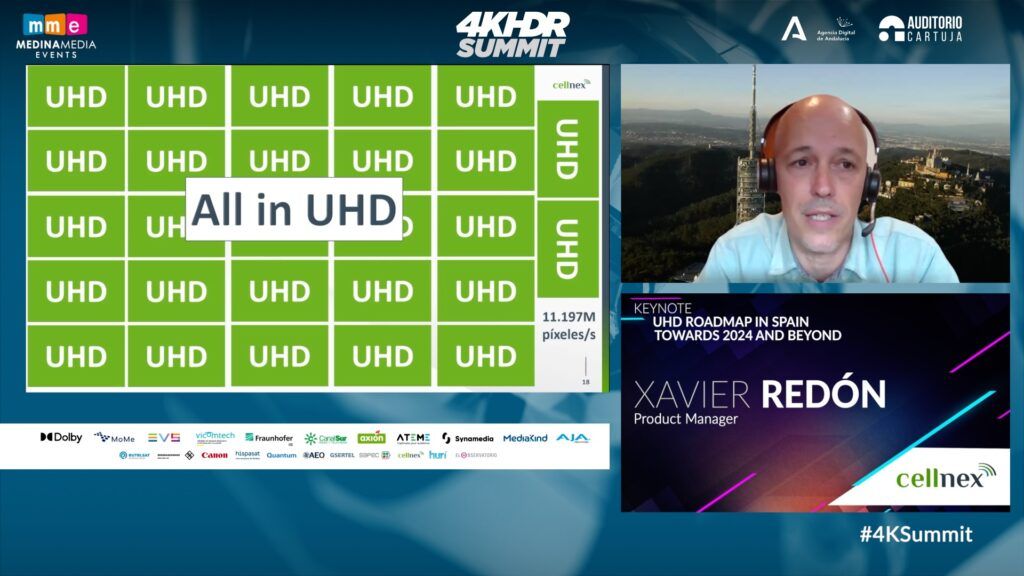
For his part, the Italian Cristiano Benzi, video expert at Eutelsat, spoke about the contribution of satellites to Ultra High Definition (UHD) in recent years with the presence of Eutelsat in several milestones such as the Vatican Media project with the opening ceremony of the Holy Door, “the first event broadcast live worldwide in Ultra HD thanks to the Eutelsat satellite”. Since 2008, when the Japanese NHK organized a demonstration with 8K images, Eutelsat has been closely linked to UHD and, although Cristiano Benzi considers that “the situation in Europe is promising”, he also regrets that “we currently have ten channels in UHD out of a total of 1000 channels between standard definition and high definition, approximately 1%”.

UK-based Aron Randhawa, Canon’s senior product marketing specialist, has shared the launch of “a highly versatile new cinema camera,” the EOS C400, which provides “next-generation imaging performance that caters not only to cinematography, but also to live streaming and virtual production.”
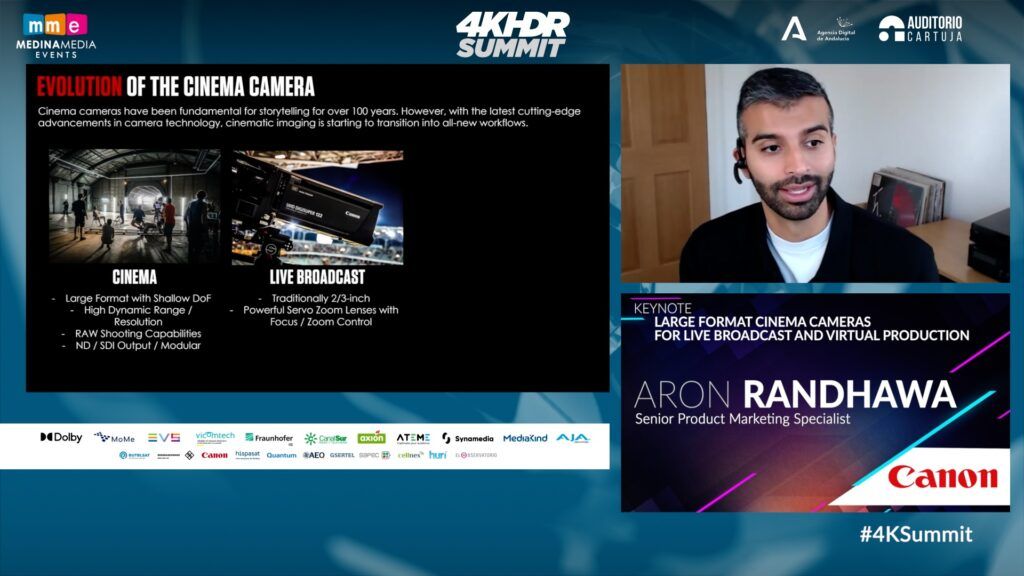
Fourth and final day, virtual second
The tenth edition of the 4K HDR Summit ends this Thursday, November 14 with the second virtual day, the so-called ‘Day of Presidents’ in which Bill Baggelaar, president of the UHD Alliance will participate; the president of the UHD Forum of Italy, Benito Di Stefano; and the director of operations of the 8K Association, Juan Reyes. Also present will be the president of Canal Sur Radio and Television, Rafael Porras, who will open a day in which the summit will travel to Paris to talk with the CEO of The Explorers, Olivier Chiabodo; to India to talk with Sumant Bahl, general manager of Europe and Africa of travelxp; or Miami to talk about post-production with the vice president of Telemundo Center, Wally Rodriguez. To round off the 10th edition of the 4K HDR Summit, the head of imaging at NASA’s Johnson Space Center in Houston, Dylan Mathis, will close this international summit.
The conferences of the 4K HDR Summit 2024 can be followed on Medina Media Events’ ‘The Observatory’ and will be available 24/365. On this platform, attendees can also schedule video meetings with other participants and speakers, in addition to exclusive virtual demonstrations.
The tenth edition of the 4K HDR Summit is organized by Medina Media Events and is supported by the Agencia Digital de Andalucía (ADA), Dolby, MOME, Vicomtech, Canal Sur Radio y Televisión, EVS, Synamedia, Fraunhofer IIS, Axion, Mediakind, Ateme, AJA, Hispasat, Quantum, Cellnex, Eutelsat, Rohde & Schwarz, Canon, Sapec, AEQ, Gsertel, Hurí and UHD Spain, among others. Schwarz, Canon, Sapec, AEQ, Gsertel, Hurí and UHD Spain, among others.



